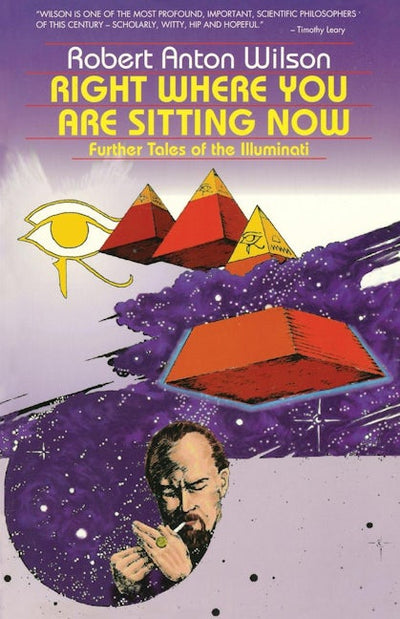You may also like
Terpenes
Regular price $16.95 Save $-16.95Terpenes (pronounced tur-peens), or terpenoids, are aromatic metabolites found in the oils of all plants. Terpenes are chemical oils produced by plants that create the unique flavor, scent and effect of herbs, fruit and flowers. When smelling a flower or herb, your nose actually registers the unique terpene profile of the plant. More than 30,000 unique terpenes have been identified in plants, animals, microbes, and fungi, which create aromas and flavors. Terpenes help carry out biological functions, can serve as vitamins, pheromones, and hormones as well as influence the immune system. When combined, terpenes produce complex profiles. For example, the herb lavender smells pleasant, tastes slightly sweet and floral, and has a relaxing effect.
Terpenes are secreted along with cannabinoids in the flower’s sticky resin glands. They are responsible for cannabis’ smell, flavor and contribute to its overall sensory effect. Terpenes give the Blueberry cannabis strain its berry smell, Sour Diesel its skunky smell, and Lavender its floral aroma. Over 100 different terpenes have been identified in the cannabis plant, and every strain tends toward a unique terpene type and composition. Terpenes play a key role in differentiating the effects of various cannabis strains. Terpenoid production evolved over time in plants, including cannabis, to attract pollinators and to act as defense compounds. Female cannabis plants produce glandular trichomes, which are glands that look like small hairs or growths that protrude from the flowers and leaves. Trichomes house crucial compounds, including cannabinoids (such as THC and CBD), flavonoids, and terpenes.
Terpenes and cannabinoids interact synergistically to promote relaxation and stress-relief, while others promote focus and acuity. The effect profile of a given terpene can change when combined with other terpenes and cannabinoids in a phenomenon known as the entourage effect. Research suggests that terpenes offer medicinal value as they mediate our body’s interaction with therapeutic cannabinoids.
Technology has developed a method of distilling terpenes into highly concentrated forms that can be used individually or in conjunction with other terpenes. Terpene isolates are commonly used in cosmetic products, incense, food flavorings, perfumes, natural medicines and a wide variety of everyday products.
Pure, isolated terpenes are highly concentrated and may pose health risks if consumed or applied to the skin with out proper dilution. Working with terpenes is shaman-like, calling on an understanding the terpene to safely unlocking their amazing potential. For instance, certain varietals are more potent than others, meaning that one dilution method cannot be applied to every type of terpene. Achieving balance can be tricky but well worth the personal learning needed.

Right Where You Are Sitting Now
Regular price $14.95 Save $-14.95
Eternal Consciousness
Regular price $18.95 Save $-18.95For thousands of years, great thinkers have argued passionately and even died for the idea that the universe is infinite, that all of us live endless times and have endless potential. This belief has been common worldwide throughout history. Many scientists still struggle with the ideas of actual infinity and eternity, but modern science has reached a level of knowledge of the physical, chemical and biological systems of our universe that will allow us to start building theories explaining phenomena once thought to be forever in the realm of faith and closed to science. Let's see if the the physical and the spiritual are so exclusive of one another after all.
This work will appeal to spiritual seekers who want to integrate scientific evidence for eternal, transcendent consciousness into their lives as well as to scientific thinkers who suspect there is more to existence than can be explained by modern reductionist science.
All beings live endless times and have endless possibilities. and seems to come from deep human instinct. There is great power in this debate, on one side for the individual, free-thinking mind and on the other for those who wish to declare themselves authorities over the realities of the universe and existence. In every age there has been no shortage of the latter, and they have often tried actively to silence the former. The debate has evolved over the centuries, but modern science still struggles with the idea of actual infinites and eternities.
The idea reaches deeply into personal, religious, philosophical and scientific realms, and over the ages has been seen by its proponents as highly liberating, offering the best paradigm for endless potentials of all types, spiritual and scientific. Critics and antagonists have seen it as threatening and humiliating to their fixed spiritual and scientific systems.
Transcend intentionally limited conceptual and physical barriers to understanding our existence and meaning in the universe handed down by "authorities" who rely on two-dimensional reductionist assumptions and methods. Don’t assume that only experts in particle physics and astrophysics can have ideas on what the universe is and how it works, it is here with us on all levels. No special or transcendent mode exists for higher consciousness in the modern cosmological paradigm, but advanced science indicates that neural systems (minds) are actually infinitely self-contained and self-creating. Universal fractal geometry, holistic biology and chaos science show that no pattern category is more real or absolute than any other.

How I Became a Madman
Regular price $15.95 Save $-15.95HOW I BECAME A MADMAN consists of 34 short multi-paragraph sketches, vignettes, parables, and tales composed in a Nietzschean prophetic voice, the insights of Blake, and Eastern story-tellers. The opening passage presents Gibran's theme of madness as social separation:
“You ask me how I became a madman. It happened thus: One day, long before many gods were born, I woke from a deep sleep and found all my masks were stolen -- the seven masks I have fashioned and worn in seven lives. I ran maskless through the crowded streets shouting, "Thieves, thieves, the cursed thieves."
Men and women laughed at me and some ran to their houses in fear of me.
And when I reached the market place, a youth standing on a house-top cried, "He is a madman." I looked up to behold him; the sun kissed my own naked face for the first time. For the first time the sun kissed my own naked face and my soul was inflamed with love for the sun, and I wanted my masks no more. And as if in a trance I cried, "Blessed, blessed are the thieves who stole my masks."
Thus I became a madman.
And I have found both freedom and safety in my madness; the freedom of loneliness and the safety from being understood, for those who understand us enslave something in us.
But let me not be too proud of my safety. Even a Thief in a jail is safe from another thief.”
Gibran shows that we wear masks to get along society that demands conformity for collective purposes, whereas to act without a mask, to think and speak and behave without the veil of illusion is to be mad. While being maskless frees us, it carries a risk of loneliness and misunderstanding as we become estranged from others. The Madman goes unnoticed, not listened to, and pitied by others.
The press for conformity absorbs society like nothing else. When we look beneath the masks of daily life, we find hypocrisy, greed, pride, sloth, ambition, vanity, conformity. These people do not see anything wrong with the ways of the world. Instead, in madness there is wisdom.
In HOW I BECAME A MADMAN a youth wants but to be himself, not what his parents and family demand he be, so he has fled to a madhouse —his hermitage — to be what he wants to be.
This is a heart-felt critique of hypocrisy, wealth, arrogance, and power versus the individual. Who has learned to disengage, to keep a distance while nevertheless relating to others with compassion and kindness.

Create Your Personal Power Plan
Regular price $17.95 Save $-17.95Shows how to put optimism to practical use. How to take command of your life and leave behind your fears through simple and sound steps. Shares ten simple rules that can change your life, helpful guidelines for creating personal affirmations, along with inspirational quotations, motivational stories and anecdotes demonstrating use of the commandments.
Includes strategies to create and achieve personal goals, along with stories of success, words of wisdom, and inspirational exercises to gain confidence and overcome procrastination.

Coca
Regular price $17.95 Save $-17.95






